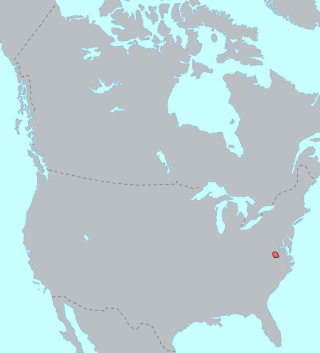This article should specify the language of its non-English content, using {{lang}}, {{transliteration}} for transliterated languages, and {{IPA}} for phonetic transcriptions, with an appropriate ISO 639 code. Wikipedia's multilingual support templates may also be used - notably ntw for Nottoway. (October 2024) |
| Nottoway | |
|---|---|
| Native to | United States |
| Region | Virginia |
| Ethnicity | Nottoway people |
| Extinct | 1838, with the death of Edith Turner |
| Revival | [1] |
Iroquoian
| |
| Language codes | |
| ISO 639-3 | Either:ntw – Nottowaynwy – Nottoway-Meherrin |
nwy Nottoway-Meherrin | |
| Glottolog | nott1246 Nottowaymehe1242 Meherrin |
 Pre-contact distribution of the Nottoway language | |
Nottoway /ˈnɒtəˌweɪ/, also called Cheroenhaka, is an extinct language spoken by the Nottoway people. Nottoway is closely related to Tuscarora within the Iroquoian language family. Two tribes of Nottoway are recognized by the state of Virginia: the Nottoway Indian Tribe of Virginia and the Cheroenhaka (Nottoway) Indian Tribe. Other Nottoway descendants live in Wisconsin and Canada, where some of their ancestors fled in the 18th century. The last known speaker, Edith Turner, died in 1838. The Nottoway people are undertaking work for language revival.[2]
Knowledge of Nottoway comes primarily from a word list collected on March 4, 1820. Former President Thomas Jefferson’s handwritten letter to Peter S. Du Ponceau, on July 7, 1820, states that a Nottoway Indian vocabulary was obtained on March 4th, 1820 from Edith Turner, styled as their “Queen,” by John Wood, a former Professor of Mathematics at the College of William and Mary.[3] Du Ponceau recognized the language immediately as Iroquoian, writing that he was "struck as well as astonished at its decided Iroquois Physiognomy."[4] Blair A. Rudes (1981) concluded that Nottoway is a distinct language from Tuscarora, but closest to Tuscarora within Iroquoian.[5]
In addition to the vocabulary collected by John Wood, a few additional words were gathered by James Trezvant.[6]
- ^ Nottoway language at Ethnologue (26th ed., 2023)

- ^ "Nottoway-Meherrin". Ethnologue. 2023. Retrieved January 18, 2013.
- ^ Thomas Jefferson to Peter S. Du Ponceau, July 7, 1820
- ^ Peter S. DuPonceau to Thomas Jefferson, July 12, 1820, The Thomas Jefferson Papers, Series 1, The Library of Congress.
- ^ Rudes, Blair (1981). "A Sketch of the Nottoway Language from a Historical-Comparative Perspective". International Journal of American Linguistics. 47: 27–49. doi:10.1086/465672. S2CID 145679705.
- ^ Encyclopedia Virginia